Anyone who’s ever participated in community theater understands that it’s a DIY activity. Most companies don’t have extra cash for costumes or props or set dressing — so actors end up contributing supplies to the production. I’d made my own outfit for Manicomio, and expected to have to do the same this second time around. No problemo. I just never thought I’d be asked to break my clarinet and mutilate a corset in the process! Wait — what?? Okay, hold on. Let me start back at the beginning — this is one hell of a tale!
A Very Different Process, Indeed
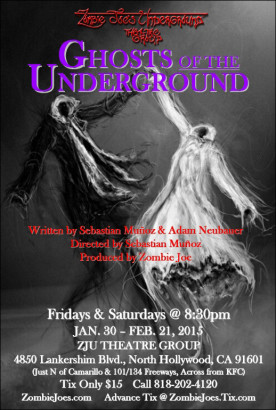
The whole fiasco started out much like my stage debut — with me being arm-twisted (though somewhat less than the first time) into a production meeting, where a pile of amateur thespians discussed how to breathe life into Ghosts Of The Underground. The basic premise was a cop who’s investigating a string of homicides, all tied to the death of his wife — beyond that, we had complete freedom to go in any direction. Our group decided on “existentialist goth noir” for the genre (a 40s-era gumshoe, searching for purpose amid surreal situations, and followed throughout the show by the dead victims he was unable to save). When he finally solves the crime, our dick would be shocked to discover that HE had actually been committing these murders all along. He’d return to his desk (where the play began) — the whole thing would reboot and begin again, then the curtain would fall. Our detective’s in hell — and his punishment is to keep repeating his sins over and over again. Brilliant, right?
My job was to work up a well-rounded persona that could be eighty-sixed in an interesting way, but who was intimately connected with at least one other character — helping to create a chain of events for our P.I. to follow. I spent the better part of an evening fleshing out (literally and figuratively) a lusty-busty whorehouse madam with a side business terminating unwanted pregnancies. It just so happens she’s also a sibling of the detective’s wife — but they keep that fact a secret because of the disreputation that accompanies the world’s oldest profession. Mrs. Gumshoe appears unexpectedly, requesting an abortion (having been knocked up by someone other than her husband). Our brothel-keeper agrees, performs the procedure — and is subsequently murdered by a mysterious stranger (stabbed to death with her own coat-hanger, no less) after the sister leaves. Tell me that’s not a show-stopper!
When I sent this little vignette over to the director, he said that he loved it and couldn’t wait to incorporate my story into the larger plot. Then I arrived at the first rehearsal (quite pointedly AFTER signing a contract, committing to the show in its original form). I found out that my lady of the night had been thrown completely out the window. And it wasn’t just her — everyone’s characters got the axe!
The theater owner now insisted on more control over our final product, so he’d brought his manager in to “co-write.” After working all weekend with him on the script, our director handed us nine pages for a 45-minute performance — NINE! The common rule of thumb is “one page equals one minute of stage time.” Of course that can fluctuate. But I know for goddamn sure that nine pages is not a three-quarters-of-an-hour-long production, regardless of your writing style! So where was the rest of it coming from? Out of our butts, apparently — we were told to improvise and we’d cobble it together as we went along.
With my creative efforts summarily thrown in the trash, it was clear that this was not the well-organized and intellectually respectful collaborative process I’d experienced previously. It was a fucking mess. After one, maybe two days of rehearsal chaos (and a whole lot of frustration), I was done. I was standing right on the very precipice of walking out (along with several of my colleagues). That’s when I really screwed up.
Be Careful What You Offer
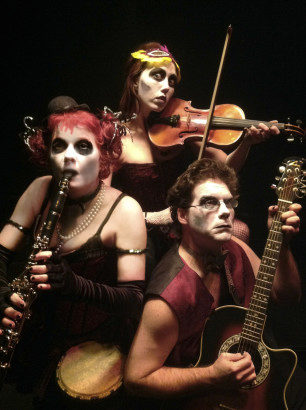 Our director had been making noises about wanting a music ensemble to perform during the show — in a fit of I-don’t-know-what-the-fuck-I-was-thinking, I made the monumental mistake of telling him that I was a clarinetist. It didn’t matter that the last time I’d touched my horn (outside of a homecoming football game halftime I’d marched that previous fall) was in college. He said, “You have to play!” Then I made an even more colossal blunder — I also let it slip that I owned a djembe. “Play both!”
Our director had been making noises about wanting a music ensemble to perform during the show — in a fit of I-don’t-know-what-the-fuck-I-was-thinking, I made the monumental mistake of telling him that I was a clarinetist. It didn’t matter that the last time I’d touched my horn (outside of a homecoming football game halftime I’d marched that previous fall) was in college. He said, “You have to play!” Then I made an even more colossal blunder — I also let it slip that I owned a djembe. “Play both!”
Sure — why not? I can totally blow air across a delicate bamboo reed as I bang the crap out of an African drum (all while hyper-emoting and wearing a corset). No problem! But hey — it got me out of having to deal with the trainwreck of a script they were developing. So I picked my horn up seriously for the first time in 20 years, and proceeded to memorize an entire concert’s worth of music.
I will openly admit that it was an odd mix of songs — a little Bach (Minuet In G), a little Eisley (Telescope Eyes), some Copland (Appalachian Spring), a touch of Simon And Garfunkel (Scarborough Fair), a pinch of Italian aria a-la Mediaeval Baebes (Veni Veni Bella), a piece from the court of King Henry VIII (Helas Madame), and my favorite part of Variations On A Korean Folk Song (where the clarinet solo goes all the way down to that bottom-most register).
But the best part was being asked to devise a drumming sequence to drive the troupe’s Bring Me To Life dance routine. (I have no use for fake-christian-goth, but I kicked some serious ASS on those rhythms!) Of course, the producer received a cease-and-desist for failure to pay Evanescence licensing rights — but that’s a whole different story. I’m just thankful that Enya got kicked to the curb. Much as I love her singing, that insufferable May It Be from LOTR is enough to make me want to punch her in the face. (I mean come on — 3/4, 2/4, 5/4, 4/4. Pick a damn time signature, already!)
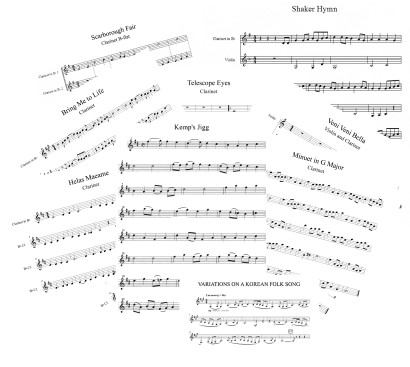 But our biggest obstacle was the fact that no one involved had ever produced a play with a live soundtrack — and our musical director had never actually scored, arranged, or even transposed in her life. (She was 100% bullied into taking charge of this little ensemble sans relevant experience. The poor girl was in even more over her head than me!) Detail-oriented and pushy as I am, I ended up forcing a lot of the decisions that needed to be made for the show — things like getting us in tune, teaching our singers the right rhythms, deciding at exactly what point in a song/scene we should start/stop playing.
But our biggest obstacle was the fact that no one involved had ever produced a play with a live soundtrack — and our musical director had never actually scored, arranged, or even transposed in her life. (She was 100% bullied into taking charge of this little ensemble sans relevant experience. The poor girl was in even more over her head than me!) Detail-oriented and pushy as I am, I ended up forcing a lot of the decisions that needed to be made for the show — things like getting us in tune, teaching our singers the right rhythms, deciding at exactly what point in a song/scene we should start/stop playing.
And don’t even get me going on the sheet music! Our guitarist did everything by ear, so the only part Little Miss M.D. downloaded was for her violin. She then attempted a translation from the key of C over to B-flat — but whatever happened during this process gave me five sharps in every song. And once we started playing together, a lot of my notes were a half-step (or more) wrong. So I had to go tone-by-tone during rehearsal and re-do it all, switching to a more manageable key signature, writing in accidentals by hand, and correcting all the unintentional dissonance. Instead of penning dialogue, I had to compose. It was not enjoyable. Ask my high school band director — there’s a reason I don’t do music theory!
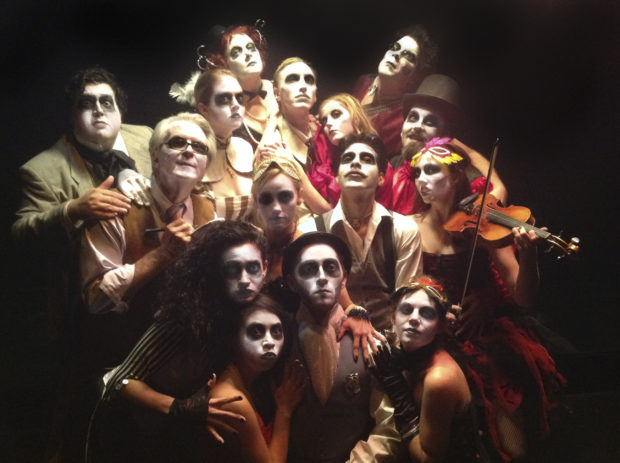
The rest of the rehearsal process was so surreal, I wondered if we’d not somehow been transported to our detective’s favorite circle of hell. At one point, the director said, “I’m going shopping for costumes and props. I’ll be gone for the rest of the afternoon. You guys block out the last ten pages of the show.” Excuse me? My response was, “So I assume we’re all getting co-director credit in the playbill?” I’m not sure he appreciated me labeling this particular technique “direction through abdication,” but that’s what it felt like. Then our choreographer quit more than halfway through rehearsals (due to “irreconcilable differences” with the director) — so most of our dance numbers were nothing more than random rhythmic writhing. And by the Wednesday of tech week (two days before opening night), we still only had 32 minutes of show — so the writers decided to add another scene and two extra songs. Sigh…
Oh! I almost forgot the “clarinet/corset” part of this diatribe! Throughout the show I was a multi-tasking musician — alternating woodwind on one song, percussion on the next. But I needed both hands to play. So where the heck was I supposed to put my horn while I was beating on the skins? I thought I was so clever, tucking it neatly away in my djembe strap — until I realized that the pressure had bent my low F-sharp key so far out of shape, my clarinet would no longer play. (That was a $60 unreimbursable repair.) I had also loaned several pieces of clothing to cast members who didn’t maintain the extensive personal costume closet I have — and those folks were, shall we say, less than kind to my stuff. (A striped bustle was utterly destroyed and had to be replaced — $45 there. Then my handmade sequined corset came back smelling like armpits and with boning poking through in three places — another $50.) That was the day I learned a Max Bialystock-style lesson about the theater. Never put your own belongings in the show!
We were so unprepared for opening night, it wasn’t even funny. But we received rave reviews (and were even included in the Stage Raw list of “top 10 shows to see”) from the very start — so clearly we were doing something that spoke to folks. By the end of the run, we’d largely gotten our act together, and I ended up very pleased with the end result we’d created. But damn — I never want to go through anything like that again!
- A Macabre Danse — Zombie Joe’s Underground Theatre has been experimenting of late — removing the stage, removing the chairs, and pushing the bounds of where their theatre starts and ends. Each time ZJU pushes the boundary of their stage to include the entire theatre, they deliver a more powerful performance than the last. As you walk through the door, you’re greeted by the sound of live music. A violinist, guitarist, and a clarinetist, are playing a rustic tune. The tune played very much at home in a faire campground. As you look around, you realize you’re already amidst the play. A detective is busy silently working a crime board. His desk covered with evidence. In the theatre proper, a festival danse is underway. The atmosphere of the festival — a cross between a gypsy camp, and perhaps regional yearly celebration, with a touch of the sinister. The troupe painted up like shadows of the living are going about the danse in stop motion. They appear to be telling a silent story. At the very least they are dancing the echoes of their characters. Shortly after the story begins, the central event takes place. With a detective present, it would have to be a murder mystery. So begins his task of finding who killed his beloved wife. The entire Danse Macabre, and I say that because the story has a preternatural feel to it, feels like shadows echoing the actions their masters took in life. It feels as if the story takes place in purgatory. The repetition of freezing in place, the somber songs chosen, and the danse revelers continuing in their merriment while the main characters converse. Ghosts of the Underground is filled with a foreboding sense of shadows, echoes, and reflections. The Detective is moving about an entire city enthralled in the hedonistic pleasure of danse. He must stalk out his suspects and pull them from their activities. When he does this, they stop being echoes and gain a voice of their own, for a moment at least. As the story progresses you realize the use of danse and music are characters themselves. Throughout the story, the musicians weave their magic — what you see wouldn’t exist without the musicians. They did an excellent job setting the tone of the scenes.This is much more impressive when you realize, the audience was allowed to and encouraged to move around the theatre/stage the entire time. You’re pulled head long into the story because it happens in and around you. You can’t escape the Danse Macabre. Ghosts of the Underground is a strong macabre and preternatural showing. It feels like a story played endlessly in purgatory, one the characters are dying to escape, but they know not they are repeating their actions over and over.
- Haunted By Ghosts — Halfway through Ghosts Of The Underground’s opening night, I had the strongest sense of deja vu. My imagination summoned up a series of silent movies. Doctor Mabuse, Nosferatu, The Cabinet of Dr. Caligari, and M. The words “A German Expressionist Musical” kept echoing inside my skull. And that is what this show turned out to be. Walking into the theatre, a different space greeted me than usual. The lobby had been transformed into part of the stage, including a very talented several piece band (Sasha Snow, Ramona Creel, Michael Guthrie) — whose eerily atmospheric music follows you from space to space throughout the show. Then the story began, of a detective (Ian Heath) and his neglected Wife (Sara Kessler). A strange hooded figure in a mask murders her and the detective relentlessly pursues her killer. Through the community, evidently in the midst of some kind of carnival, he goes. One part murder mystery, another part fantastical odyssey, with more than a dash or two of Kurt Weill tossed in, the story unfolds with as something not quite a nightmare but not your usual dream either. Given the title, I found myself wondering how many of these characters were already dead. In time arriving at an answer, in now way am I sure it correct. Rather than criticism, this makes for high praise. Never did I stop feeling intrigued as well as (just as important) entertained — not least by the music and almost-dance of the show. As noted before, this qualifies as a musical. My one complaint — if it can be called that — was how much I wished the show were even longer, more elaborate, in a larger space with a bigger audience. Ghosts of the Underground (have fun contemplating the meaning of that title) delves into the shadows of life, of perception, of our beliefs in what we truly are. All the meat that made German Expressionism so powerful a genre — a warning echo of the tumult that was to come. How entirely appropriate the story has no names, but plenty of masks. Professions but not families, not really. People die in this story so very easily — and the fact audience blends with cast in terms of space only makes that fact more eerily powerful.
- It’s Moulin Rouge-ish, It’s Thrilling, It’s Definitely Chilling — Truly an engaging piece of drama, performance art, and macabre (done with style, mystery, and rich characters) — Ghosts Of The Underground is a fresh twist on the unexpected and surprising whereby I felt I was actually an observer in the turn of the century Moulin Rouge-ish district on the streets of Paris, or dark seedy alley of New York many decades ago. This entire production was guided by some clever blocking and staging that literally involves the ‘intertwining’ of the audience in the story as the adventure happens all around you. While you wait to find a ‘spot’ in the audience, a trio of musicians (Michael Guthrie, Sasha Snow, and Ramona Creel) play a sympathetic and avant-garde-stylized music to underscore the mystery that is about to unfold around you. With a guitar, clarinet, and violin, the music is often haunting — often chillingly moving, but a real punch into the events as they literally happen in front of you. Once the theatre opens you are allowed to walk around, sit, stand, lean or move as you see fit and, of course, as the characters and their actions will actually allow you too. With detailed choreography by Jessica Weiner, nicely created special props by Ramona Creel and Benjamin Warren and the influential musical direction by Sasha Snow (which uses some very popular songs that are sung and played in cleverly placed ways, such as the hauntingly sung Telescope Eyes and the poundingly effective drum-circle style interpretation of Bring Me To Life, to drive story points) — the story is one or murder and intrigue mixed with a bizarrely haunting Twilight-Zone type of ending.Truly an audience immersive macabre experience, Ghosts Of The Underground is a hauntingly bizarre murder mystery that ends with a twist and a surprise or two. Not for the weak of spirit or of the sensitive of heart and containing brief full nudity, this is an engaging piece of drama, performance art and the macabre — all wrapped up into a chilling revelation that can only be found at Zombie Joe’s Underground Theatre Group.
- Top Ten Recommended In L.A. — On its most visceral level, the power of good theater, as with all great art, lies in its capacity to take us by surprise. Obversely, to see it coming — whether it’s a standup’s punch line, a magician’s misdirection, an actor’s line delivery or a playwright’s choice and ordering of the words — is a recipe for tedium and disengagement. Overfamiliarity is always the kiss of death. In the case of Ghosts Of The Underground, director Sebastian Muñoz and writer Adam Neubauer’s (mostly) jukebox-musicalized, immersive mash-up of Greek myth, hardboiled pulp fiction and the venerable ghost story, surprise and purposeful disorientation are the order of the evening. The playing space extends into the very lobby, where arriving audience members are greeted by the spectacle of a gaunt, 1940s private eye (Ian Heath) pouring through newspaper clippings of lurid murders to an entertaining selection of music played by a live, three-piece orchestra (Sasha Snow on violin, Michael Guthrie on acoustic guitar
, Ramona Creel on clarinet and drum). Inside the stripped theater itself, the remainder of the 15-member ensemble, made up in ghoulish commedia whiteface and dressed in colorful (and uncredited) costumes, enacts an eerie preshow of broken, cryptic tableaus that, when the “play” does finally kick in, takes on the hallucinatory aspects of a Mardi Gras in hell. That action is both punctuated and musically elevated by interpretations of 10 songs mostly taken from film scores and recent pop charts, but that also include a bravura performance by Egyptian singer-songwriter Sue Shaheen of her original composition, “Makansh Hallo.” Snow’s lead vocals on Eisley’s Telescope Eyes and Creel’s driving djembe rhythms on Evanescence’s Bring Me To Life are particular highlights. To say anything further would undermine that all-important element of surprise mentioned above. Suffice it to say that they expertly reveal the mythic heart lurking under their macabre musical mystery and send the audience into the night feverishly thrilled and affectingly haunted.
Click here for reuse options!
Copyright 2015 RamonaCreel.com
Make Your Friends Jealous! Show Everyone What A Big Fricking Brain You Have! Be The First To Share This Amazing Content With Them!

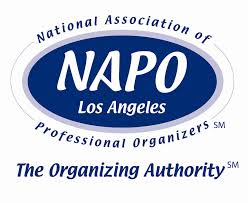



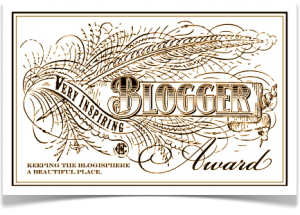
Ghosts Of The Underground
Anyone who’s ever participated in community theater understands that it’s a DIY activity. Most companies don’t have extra cash for costumes or props or set dressing — so actors end up contributing supplies to the production. I’d made my own outfit for Manicomio, and expected to have to do the same this second time around. No problemo. I just never thought I’d be asked to break my clarinet and mutilate a corset in the process! Wait — what?? Okay, hold on. Let me start back at the beginning — this is one hell of a tale!
A Very Different Process, Indeed
The whole fiasco started out much like my stage debut — with me being arm-twisted (though somewhat less than the first time) into a production meeting, where a pile of amateur thespians discussed how to breathe life into Ghosts Of The Underground. The basic premise was a cop who’s investigating a string of homicides, all tied to the death of his wife — beyond that, we had complete freedom to go in any direction. Our group decided on “existentialist goth noir” for the genre (a 40s-era gumshoe, searching for purpose amid surreal situations, and followed throughout the show by the dead victims he was unable to save). When he finally solves the crime, our dick would be shocked to discover that HE had actually been committing these murders all along. He’d return to his desk (where the play began) — the whole thing would reboot and begin again, then the curtain would fall. Our detective’s in hell — and his punishment is to keep repeating his sins over and over again. Brilliant, right?
My job was to work up a well-rounded persona that could be eighty-sixed in an interesting way, but who was intimately connected with at least one other character — helping to create a chain of events for our P.I. to follow. I spent the better part of an evening fleshing out (literally and figuratively) a lusty-busty whorehouse madam with a side business terminating unwanted pregnancies. It just so happens she’s also a sibling of the detective’s wife — but they keep that fact a secret because of the disreputation that accompanies the world’s oldest profession. Mrs. Gumshoe appears unexpectedly, requesting an abortion (having been knocked up by someone other than her husband). Our brothel-keeper agrees, performs the procedure — and is subsequently murdered by a mysterious stranger (stabbed to death with her own coat-hanger, no less) after the sister leaves. Tell me that’s not a show-stopper!
When I sent this little vignette over to the director, he said that he loved it and couldn’t wait to incorporate my story into the larger plot. Then I arrived at the first rehearsal (quite pointedly AFTER signing a contract, committing to the show in its original form). I found out that my lady of the night had been thrown completely out the window. And it wasn’t just her — everyone’s characters got the axe!
The theater owner now insisted on more control over our final product, so he’d brought his manager in to “co-write.” After working all weekend with him on the script, our director handed us nine pages for a 45-minute performance — NINE! The common rule of thumb is “one page equals one minute of stage time.” Of course that can fluctuate. But I know for goddamn sure that nine pages is not a three-quarters-of-an-hour-long production, regardless of your writing style! So where was the rest of it coming from? Out of our butts, apparently — we were told to improvise and we’d cobble it together as we went along.
With my creative efforts summarily thrown in the trash, it was clear that this was not the well-organized and intellectually respectful collaborative process I’d experienced previously. It was a fucking mess. After one, maybe two days of rehearsal chaos (and a whole lot of frustration), I was done. I was standing right on the very precipice of walking out (along with several of my colleagues). That’s when I really screwed up.
Be Careful What You Offer
Sure — why not? I can totally blow air across a delicate bamboo reed as I bang the crap out of an African drum (all while hyper-emoting and wearing a corset). No problem! But hey — it got me out of having to deal with the trainwreck of a script they were developing. So I picked my horn up seriously for the first time in 20 years, and proceeded to memorize an entire concert’s worth of music.
I will openly admit that it was an odd mix of songs — a little Bach (Minuet In G), a little Eisley (Telescope Eyes), some Copland (Appalachian Spring), a touch of Simon And Garfunkel (Scarborough Fair), a pinch of Italian aria a-la Mediaeval Baebes (Veni Veni Bella), a piece from the court of King Henry VIII (Helas Madame), and my favorite part of Variations On A Korean Folk Song (where the clarinet solo goes all the way down to that bottom-most register).
But the best part was being asked to devise a drumming sequence to drive the troupe’s Bring Me To Life dance routine. (I have no use for fake-christian-goth, but I kicked some serious ASS on those rhythms!) Of course, the producer received a cease-and-desist for failure to pay Evanescence licensing rights — but that’s a whole different story. I’m just thankful that Enya got kicked to the curb. Much as I love her singing, that insufferable May It Be from LOTR is enough to make me want to punch her in the face. (I mean come on — 3/4, 2/4, 5/4, 4/4. Pick a damn time signature, already!)
And don’t even get me going on the sheet music! Our guitarist did everything by ear, so the only part Little Miss M.D. downloaded was for her violin. She then attempted a translation from the key of C over to B-flat — but whatever happened during this process gave me five sharps in every song. And once we started playing together, a lot of my notes were a half-step (or more) wrong. So I had to go tone-by-tone during rehearsal and re-do it all, switching to a more manageable key signature, writing in accidentals by hand, and correcting all the unintentional dissonance. Instead of penning dialogue, I had to compose. It was not enjoyable. Ask my high school band director — there’s a reason I don’t do music theory!
The rest of the rehearsal process was so surreal, I wondered if we’d not somehow been transported to our detective’s favorite circle of hell. At one point, the director said, “I’m going shopping for costumes and props. I’ll be gone for the rest of the afternoon. You guys block out the last ten pages of the show.” Excuse me? My response was, “So I assume we’re all getting co-director credit in the playbill?” I’m not sure he appreciated me labeling this particular technique “direction through abdication,” but that’s what it felt like. Then our choreographer quit more than halfway through rehearsals (due to “irreconcilable differences” with the director) — so most of our dance numbers were nothing more than random rhythmic writhing. And by the Wednesday of tech week (two days before opening night), we still only had 32 minutes of show — so the writers decided to add another scene and two extra songs. Sigh…
Oh! I almost forgot the “clarinet/corset” part of this diatribe! Throughout the show I was a multi-tasking musician — alternating woodwind on one song, percussion on the next. But I needed both hands to play. So where the heck was I supposed to put my horn while I was beating on the skins? I thought I was so clever, tucking it neatly away in my djembe strap — until I realized that the pressure had bent my low F-sharp key so far out of shape, my clarinet would no longer play. (That was a $60 unreimbursable repair.) I had also loaned several pieces of clothing to cast members who didn’t maintain the extensive personal costume closet I have — and those folks were, shall we say, less than kind to my stuff. (A striped bustle was utterly destroyed and had to be replaced — $45 there. Then my handmade sequined corset came back smelling like armpits and with boning poking through in three places — another $50.) That was the day I learned a Max Bialystock-style lesson about the theater. Never put your own belongings in the show!
We were so unprepared for opening night, it wasn’t even funny. But we received rave reviews (and were even included in the Stage Raw list of “top 10 shows to see”) from the very start — so clearly we were doing something that spoke to folks. By the end of the run, we’d largely gotten our act together, and I ended up very pleased with the end result we’d created. But damn — I never want to go through anything like that again!
- Top Ten Recommended In L.A. — On its most visceral level, the power of good theater, as with all great art, lies in its capacity to take us by surprise. Obversely, to see it coming — whether it’s a standup’s punch line, a magician’s misdirection, an actor’s line delivery or a playwright’s choice and ordering of the words — is a recipe for tedium and disengagement. Overfamiliarity is always the kiss of death. In the case of Ghosts Of The Underground, director Sebastian Muñoz and writer Adam Neubauer’s (mostly) jukebox-musicalized, immersive mash-up of Greek myth, hardboiled pulp fiction and the venerable ghost story, surprise and purposeful disorientation are the order of the evening. The playing space extends into the very lobby, where arriving audience members are greeted by the spectacle of a gaunt, 1940s private eye (Ian Heath) pouring through newspaper clippings of lurid murders to an entertaining selection of music played by a live, three-piece orchestra (Sasha Snow on violin, Michael Guthrie on acoustic guitar
, Ramona Creel on clarinet and drum). Inside the stripped theater itself, the remainder of the 15-member ensemble, made up in ghoulish commedia whiteface and dressed in colorful (and uncredited) costumes, enacts an eerie preshow of broken, cryptic tableaus that, when the “play” does finally kick in, takes on the hallucinatory aspects of a Mardi Gras in hell. That action is both punctuated and musically elevated by interpretations of 10 songs mostly taken from film scores and recent pop charts, but that also include a bravura performance by Egyptian singer-songwriter Sue Shaheen of her original composition, “Makansh Hallo.” Snow’s lead vocals on Eisley’s Telescope Eyes and Creel’s driving djembe rhythms on Evanescence’s Bring Me To Life are particular highlights. To say anything further would undermine that all-important element of surprise mentioned above. Suffice it to say that they expertly reveal the mythic heart lurking under their macabre musical mystery and send the audience into the night feverishly thrilled and affectingly haunted.
Click here for reuse options!Copyright 2015 RamonaCreel.com
Make Your Friends Jealous! Show Everyone What A Big Fricking Brain You Have! Be The First To Share This Amazing Content With Them!
Tags: artist, author, fiction and creative writing, performance art, social commentary
(iCopyright widget here)
"I Have More To Say About This... No Surprise!"
My Favorite Road Trip Playlist
(Press-Central For Handy Soundbites, Useful Info,
And A Good Wet-Your-Pants Laugh)
If you would like to reprint this page, please contact me